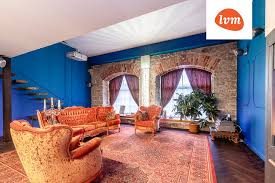Renovating an apartment can be an exciting journey, Korterite remont võtmed kätte Eestis transforming your living space to better suit your lifestyle and aesthetic preferences. However, unlike standalone homes, apartment renovations come with unique challenges, from navigating building regulations to optimizing smaller spaces. This guide will take you through the key steps and considerations for a successful apartment renovation.
1. Planning and Design
The first step is to have a clear plan. Define what you want to achieve with the renovation, whether it’s improving functionality, increasing storage, or updating aesthetics.
- Set a Budget: Outline what you’re willing to spend on the project. A clear budget helps prioritize what is essential and ensures that you stay within your financial means.
- Research Design Options: Consider the look and feel you’re aiming for. Platforms like Pinterest, Houzz, or Instagram can provide inspiration for color schemes, layouts, and materials.
- Assess Structural Constraints: Apartments have limited flexibility in structural changes. For example, load-bearing walls and shared plumbing can limit your options, so you may need a professional to assess feasibility.
2. Understand Building Regulations and Permissions
Most apartment buildings have regulations to protect the property and ensure renovations don’t negatively impact other residents. Before any work begins:
- Review Building Policies: Many apartment complexes have guidelines for renovations, especially around noise, time of work, and acceptable modifications.
- Seek Necessary Permits: Major renovations may require permits, which can be obtained from local authorities. Ensure that you also get approval from the apartment board if necessary.
- Consider Neighboring Impact: Be mindful of noise and work hours to minimize disruptions to other residents.
3. Focus on High-Impact Areas
When space and budget are limited, focusing on high-traffic areas can make a significant difference:
- Kitchen: An updated kitchen can greatly improve the feel of an apartment. Modern appliances, open shelving, and smart storage solutions maximize functionality.
- Bathroom: For smaller bathrooms, opt for space-saving fixtures and materials that make the space feel larger, like light-colored tiles and floating vanities.
- Living and Dining Areas: Consider open-concept designs to make the space feel more expansive. Mirrors, neutral tones, and strategically placed lighting can also enhance the space.
4. Maximize Space with Smart Storage Solutions
Apartments often lack extensive storage, so think vertically and creatively to maximize the available space:
- Built-In Storage: Utilize floor-to-ceiling storage units, which are perfect for small spaces as they maximize vertical space.
- Under-Bed Storage and Multi-Functional Furniture: Invest in furniture that doubles as storage. A bed with drawers or an ottoman with storage space can add functionality without clutter.
- Wall Shelves: For a minimalist aesthetic, wall shelves can hold decorative pieces or everyday items, freeing up precious floor space.
5. Choose Materials and Finishes Wisely
Opt for materials that are not only aesthetically pleasing but also durable and easy to maintain in an apartment environment:
- Flooring: Choose durable, easy-to-clean flooring like laminate or tile for high-traffic areas. Soundproofing underlay can be helpful to reduce noise for the neighbors below.
- Countertops: Materials like quartz and solid surfaces are low-maintenance and stylish, making them ideal for small kitchens or bathrooms.
- Paint and Wall Finishes: Use light colors to make rooms appear larger and brighter. If you’re renting, consider removable wallpaper as an easy way to customize without permanent changes.
6. Lighting and Ambiance
Proper lighting can transform an apartment, enhancing both functionality and ambiance:
- Natural Light: Maximize natural light by choosing sheer curtains or blinds, and use mirrors to reflect light.
- Layered Lighting: Use a mix of task, ambient, and accent lighting to create depth and atmosphere. Recessed lighting, floor lamps, and under-cabinet lights add warmth and functionality.
- Smart Lighting Solutions: Smart bulbs allow you to adjust the color and intensity of lighting, enabling you to set the perfect ambiance for different times of day.
7. Hire Professionals Wisely
Working with professionals like interior designers or contractors can make the renovation process smoother. Look for specialists with apartment experience, as they’re more likely to be familiar with the challenges specific to apartment renovations.
- Interior Designers: If budget allows, hiring a designer can be valuable. They can help you navigate space limitations and offer solutions you might not have considered.
- Licensed Contractors: Make sure to work with licensed contractors who understand local building codes and regulations. Get multiple quotes to ensure you’re getting the best value.
8. Post-Renovation Touches
The final steps can make a world of difference in personalizing your renovated space:
- Add Greenery: Plants can bring life and warmth to any space. Choose low-maintenance indoor plants if you’re new to plant care.
- Decorative Touches: Accents like rugs, art, and curtains can define your personal style. Opt for items that can easily be updated or replaced to keep the decor fresh.
- Organize and Declutter: Make sure each item has its place to keep the apartment neat and functional. Regular decluttering is key to maintaining a spacious feel.
Final Thoughts
Apartment renovation can be an immensely rewarding endeavor. With thoughtful planning, efficient use of space, and a focus on high-impact areas, you can create a home that reflects your personality while enhancing the functionality of your apartment. Remember to stay flexible and enjoy the process of transforming your space into something uniquely yours.

